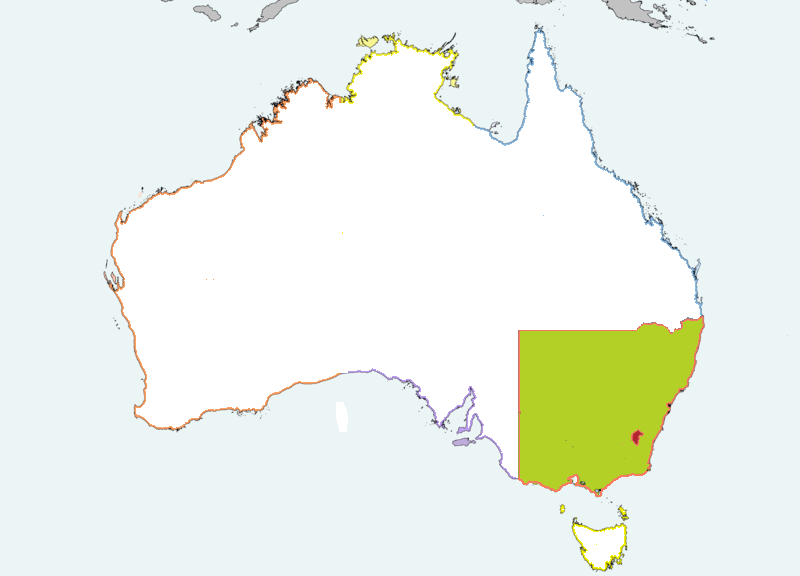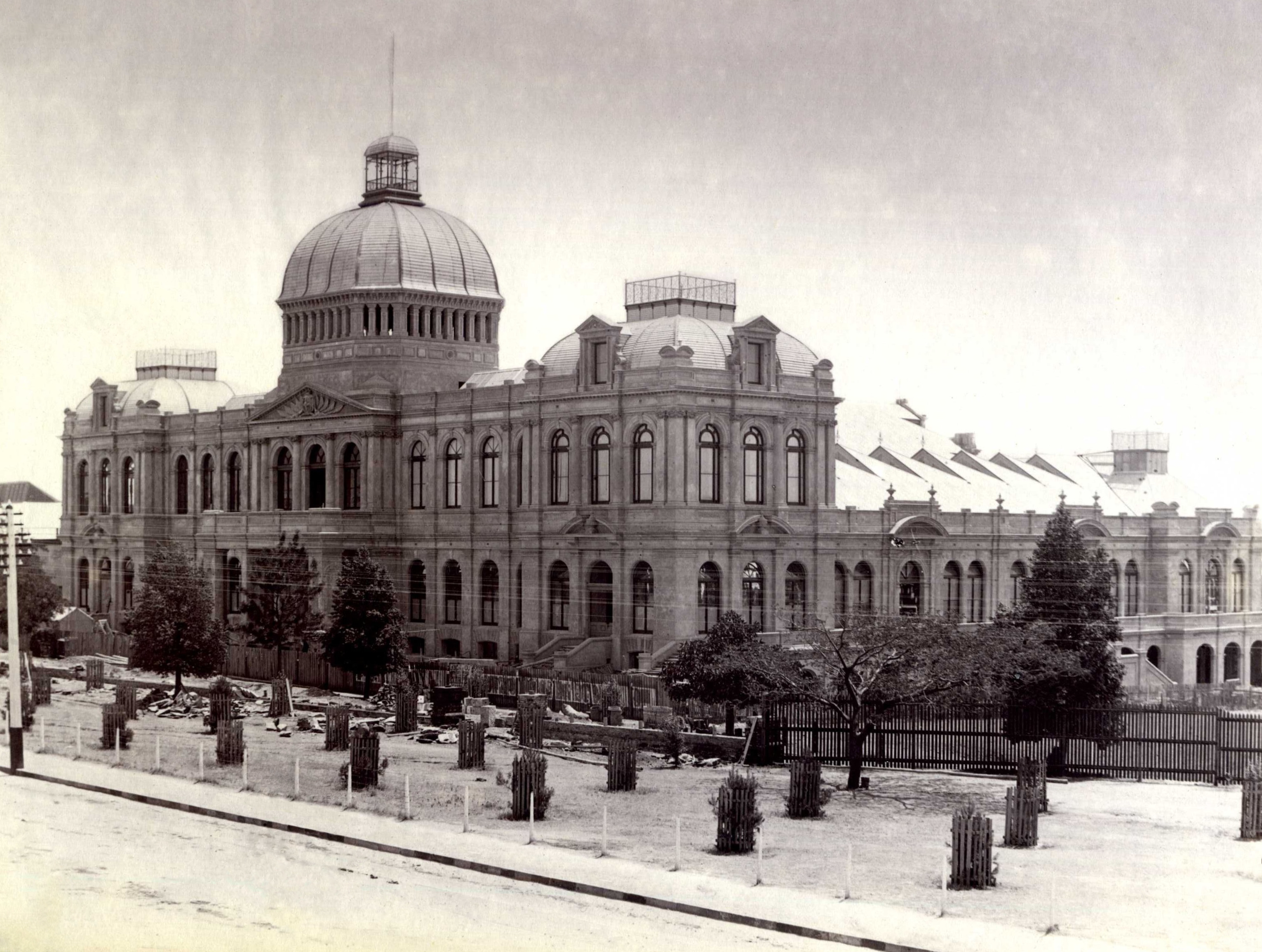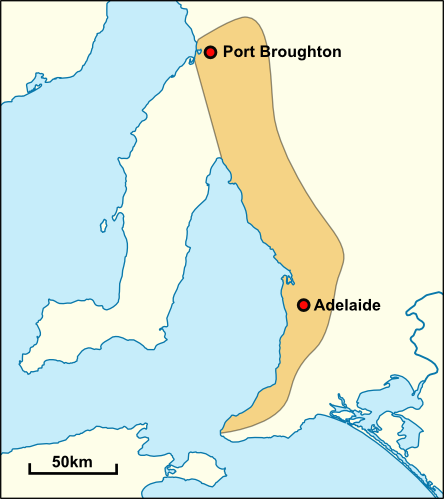|
Nunga
Nunga is a term of self-identification for Aboriginal Australians, originally used by Aboriginal people in the southern settled areas of South Australia, and now used throughout Adelaide and surrounding towns. It is used by contrast with ''Gunya'', which refers to non-Aboriginal persons. The use of "Nunga" by non-Aboriginal people is not always regarded as appropriate. The term comes from Wirangu, the language spoken around Ceduna, and is effectively the South Australian counterpart of Koori as used in New South Wales and Victoria. Other words used for Aboriginal people in South Australia are Anangu (north-west), Nharla (western Lake Eyre Basin), and Yura ( Flinders Ranges). Text may have been copied from this source, which is available under Attribution 3.0 Australia (CC BY 3.0 AU)licence. In the variety of Aboriginal English known as Nunga English, most of the terms of Indigenous origin are from Ngarrindjeri, with quite a number from the west coast ( Kokatha and ... [...More Info...] [...Related Items...] OR: [Wikipedia] [Google] [Baidu] |
Nunga Court
The Nunga Court, also known as Aboriginal Sentencing Court, is a type of specialist community court for sentencing Aboriginal people in South Australia. Such courts exist at several locations throughout the state, as a sentencing option for eligible Aboriginal and Torres Strait Islander offenders who plead guilty of an offence. The South Australian model was the first court of its type to commence operation in Australia in 1999, and other states have since used the model to fashion their own systems of Aboriginal courts. The Nunga Court operates within a magistrates court, but provides the option of a sentencing conference, using less formal procedures and with input from the community, to create a more culturally appropriate method of deciding on a sentence. Referrals to other services may be included as part of rehabilitation for the offender. History Awareness had grown through the 1990s, since the Royal Commission into Aboriginal Deaths in Custody in 1991, that the co ... [...More Info...] [...Related Items...] OR: [Wikipedia] [Google] [Baidu] |
Australian Aboriginal English
Australian Aboriginal English (AAE or AbE) is a set of dialects of the English language used by a large section of the Indigenous Australian (Aboriginal Australian and Torres Strait Islander) population as a result of the colonisation of Australia. It is made up of a number of varieties which developed differently in different parts of Australia, and grammar and pronunciation differs from that of standard Australian English, along a continuum. Some of its words have also been adopted into standard or colloquial Australian English. General description There are generally distinctive features of phonology, grammar, words and meanings, as well as language use in Australian Aboriginal English, compared with Australian English. The language is also often accompanied by a lot of non-verbal cues. Negative attitudes that exist in Australian society towards AbE have negative effects on Aboriginal people across law, health and educational contexts. Speakers have been noted to tend to c ... [...More Info...] [...Related Items...] OR: [Wikipedia] [Google] [Baidu] |
Aboriginal Australians
Aboriginal Australians are the various indigenous peoples of the Mainland Australia, Australian mainland and many of its islands, excluding the ethnically distinct people of the Torres Strait Islands. Humans first migrated to Australia (continent), Australia 50,000 to 65,000 years ago, and over time formed as many as 500 List of Aboriginal Australian group names, language-based groups. In the past, Aboriginal people lived over large sections of the continental shelf. They were isolated on many of the smaller offshore islands and Tasmania when the land was inundated at the start of the Holocene Interglacial, inter-glacial period, about 11,700 years ago. Despite this, Aboriginal people maintained extensive networks within the continent and certain groups maintained relationships with Torres Strait Islanders and the Makassar people, Makassar people of modern-day Indonesia. Over the millennia, Aboriginal people developed complex trade networks, inter-cultural relationships, law ... [...More Info...] [...Related Items...] OR: [Wikipedia] [Google] [Baidu] |
Aboriginal South Australians
The Aboriginal South Australians are the Indigenous people who lived in South Australia prior to the British colonisation of South Australia, and their descendants and their ancestors. There are difficulties in identifying the names, territorial boundaries, and language groups of the Aboriginal peoples of South Australia, including poor record-keeping and deliberate obfuscation, so only a rough approximation can be given here. Many Aboriginal South Australians refer to themselves as Nunga, and those in the APY lands use the term Anangu. Its people The following groups' lands include at least partly South Australian territory which includes: Adnyamathanha, Akenta, Amarak, Bungandidj, Diyari, Erawirung, Kaurna, Kokatha Mula, Maralinga Tjarutja, Maraura, Mirning, Mulbarapa, Narungga, Ngaanyatjarra, Ngadjuri, Ngarrindjeri, Nukunu, Parnkalla, Peramangk, Pitjantjatjara, Ramindjeri, Spinifex people, Warki. Colonial intent The ''South Australia Act 1834'' descri ... [...More Info...] [...Related Items...] OR: [Wikipedia] [Google] [Baidu] |
List Of Australian Aboriginal Group Names
This list of Australian Aboriginal group names includes names and collective designations which have been applied, either currently or in the past, to groups of Aboriginal Australians. The list does not include Torres Strait Islander peoples, who are ethnically, culturally and linguistically distinct from Australian Aboriginal peoples, although also an Indigenous Australian people. Typically, Aboriginal Australian mobs are differentiated by language groups. Most Aboriginal people could name a number of groups of which they are members, each group being defined in terms of different criteria and often with much overlap. Many of the names listed below are properly understood as language or dialect names; some are simply the word meaning ''man'' or ''person'' in the associated language; some are endonyms (the name as used by the people themselves) and some exonyms (names used by one group for another, and not by that group itself), while others are demonym A demonym (; ) or 'gen ... [...More Info...] [...Related Items...] OR: [Wikipedia] [Google] [Baidu] |
Koori
Koori (also spelt koorie, goori or goorie) is a demonym for Aboriginal Australians from a region that approximately corresponds to southern New South Wales and Victoria. The word derives from the Indigenous language Awabakal. For some people and groups, it has been described as a reclaiming of Indigenous language and culture, as opposed to relying on European titles such as "Aboriginal". The term is also used with reference to institutions involving Koori communities and individuals, such as the Koori Court, Koori Radio and Koori Knockout. The Koori region is home to the largest proportion of Australia's Indigenous population (Aboriginal and Torres Strait Islander people), with 40.7% of Indigenous Australians living in either New South Wales or Victoria. Within the region however, Koori-identifying people make up only 2.9% and 0.8% of the overall populations of New South Wales and Victoria respectively. Most of this Koori population speak English in the home, although a s ... [...More Info...] [...Related Items...] OR: [Wikipedia] [Google] [Baidu] |
Kokatha Language
The Kokatha language, also written Kukatha, Kokata, Gugada, and other variants, and also referred to as Madutara, Maduwonga, Nganitjidi, Wanggamadu, and Yallingarra and variant spellings of these, is an Australian Aboriginal language of the Western Desert language, Western Desert group traditionally spoken by the Kokatha people, whose traditional lands are in the western part of the state of South Australia, north of the Wirangu people. Country Kokatha was historically spoken in northern western areas of South Australia. Norman Tindale recorded Kokatha speakers at Tarcoola, South Australia, Tarcoola, Kingoonya, Pimba, and McDouall Peak; west to Ooldea; north to Stuart Range, South Australia, Stuart Range and Lake Phillipson. At the time of first European contact, their lands appeared to centre on Mount Eba, covering surrounding land to Kingoonya, Tarcoola, Coober Pedy and possibly Ooldea. Today, Kokatha people live in Ceduna, South Australia, Ceduna, Koonibba, Port Augusta, Ad ... [...More Info...] [...Related Items...] OR: [Wikipedia] [Google] [Baidu] |
Country Arts SA
Country Arts SA is statutory corporation created by the South Australian government under the provisions of the ''South Australian Country Arts Trust Act (1992)'', for the purpose of delivering arts to regional South Australia. Responsibility for the organisation previously rested with Arts South Australia, but since late 2018 has come under the Department of the Premier and Cabinet. History The organisation was created as a statutory body by the ''South Australian Country Arts Trust Act (1992)'' and grew into being during Diana Laidlaw's term as Minister for the Arts. In 2010, Country Arts SA established an Aboriginal Arts and Cultural Engagement program, and in 2018 it published its second "Stretch" Reconciliation Action Plan, ''Reconciliation Plan 2018–2020'', vowing to "embed principles of self-determination to ensure Aboriginal and Torres Strait Islander people have a voice and play a crucial part in making decisions on all aspects of Country Arts SA". In 2018, under ... [...More Info...] [...Related Items...] OR: [Wikipedia] [Google] [Baidu] |
Government Of South Australia
The Government of South Australia, also referred to as the South Australian Government or the SA Government, is the executive branch of the state government, state of South Australia. It is modelled on the Westminster system, meaning that the highest ranking members of the executive are drawn from an elected Parliament of South Australia, state parliament. Specifically the party or coalition which holds a majority of the South Australian House of Assembly, House of Assembly (the lower chamber of the South Australian Parliament). History South Australia was established via Letters Patent establishing the Province of South Australia, letters patent by King William IV in February of 1836, pursuant to the South Australia Act 1834, ''South Australian Colonisation Act 1834''. Governance in the colony was organised according to the principles developed by Edward Gibbon Wakefield, Edward Wakefield, where settlement would be conducted by free settlers rather than convicts. Therefore go ... [...More Info...] [...Related Items...] OR: [Wikipedia] [Google] [Baidu] |
Flinders University
Flinders University, established as The Flinders University of South Australia is a public university, public research university based in Adelaide, South Australia, with a footprint extending across a number of locations in South Australia and the Northern Territory. The main campus is in Bedford Park, South Australia, Bedford Park, about south of the Adelaide city centre. Other campuses include Tonsley, South Australia, Tonsley, Adelaide central business district, Renmark, South Australia, Renmark, Alice Springs, and Darwin, Northern Territory, Darwin. Founded in 1966, it was named in honour of British navigator Matthew Flinders, who explored and surveyed the Australian and South Australian coastline in the early 19th century. In 2022, there were 25,247 students enrolled at the university. History Origins and construction By the late 1950s, the University of Adelaide's North Terrace campus was approaching capacity. In 1960, Premier Thomas Playford IV, Thomas Playford announ ... [...More Info...] [...Related Items...] OR: [Wikipedia] [Google] [Baidu] |
University Of Adelaide
The University of Adelaide is a public university, public research university based in Adelaide, South Australia. Established in 1874, it is the third-oldest university in Australia. Its main campus in the Adelaide city centre includes many Sandstone universities, sandstone buildings of historical and architectural significance, such as Bonython Hall. Its royal charter awarded by Queen Victoria in 1881 allowed it to become the University of London, second university in the English-speaking world to confer degrees to women. It Adelaide University, plans to merge with the neighbouring University of South Australia, is adjacent to the Australian Space Agency headquarters on Lot Fourteen and is part of the Adelaide BioMed City research precinct. The university was founded at the former South Australian Society of Arts, Royal South Australian Society of Arts by the Union College and studies were initially conducted at its State Library of South Australia, Institute Building. The soc ... [...More Info...] [...Related Items...] OR: [Wikipedia] [Google] [Baidu] |
Kaurna
The Kaurna people (, ; also Coorna, Kaura, Gaurna and other variations) are a group of Aboriginal people whose traditional lands include the Adelaide Plains of South Australia. They were known as the Adelaide tribe by the early settlers. Kaurna culture and language were almost completely destroyed within a few decades of the British colonisation of South Australia in 1836. However, extensive documentation by early missionaries and other researchers has enabled a modern revival of both language and culture. The phrase ''Kaurna meyunna'' means "Kaurna people". Etymology The early settlers of South Australia referred to the various indigenous tribes of the Adelaide Plains and Fleurieu Peninsula as "Rapid Bay tribe", "the Encounter Bay tribe", "the Adelaide tribe", the Kouwandilla tribe, "the Wirra tribe", "the Noarlunga tribe" (the Ngurlonnga band) and the Willunga tribe (the Willangga band). The extended family groups of the Adelaide Plains, who spoke dialects of a common lan ... [...More Info...] [...Related Items...] OR: [Wikipedia] [Google] [Baidu] |





